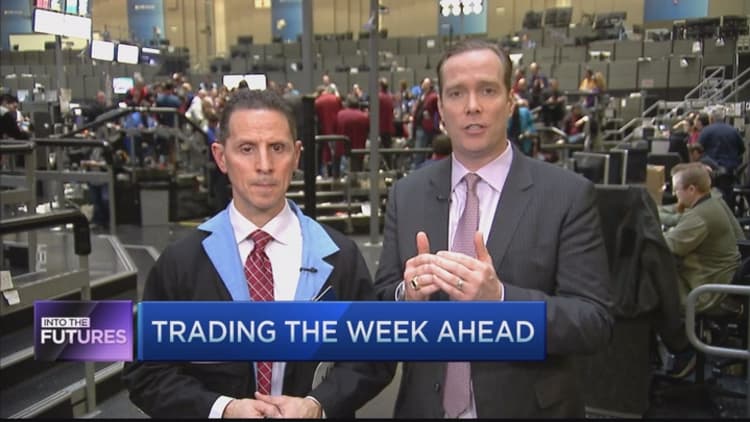
Stocks may have rebounded from their recent lows, but the option market still implies a big chance that stocks plummet anew before the year is out.
After falling as low as 1,810 two weeks ago, the Index bounced significantly in the prior week, closing Friday trading at 1,918. But even as stocks somewhat regained their footing, the market's fear certainly has not dissipated.
According to options market data from multiple providers, the December quarterly options expiring at the end of the year imply a 50 percent chance that the S&P 500 will touch 1,600 at some point in 2016. That would be a drop of nearly 17 percent from current levels and a full-year decline of 22 percent.
Read MoreWhy this could be a pivotal week for markets
And it's not just that big moves are generally expected in this more-volatile market. The converse upside level — the highest point which traders think the S&P has at least a 50 percent chance of a touching in 2016 — is 2,110, or just 10 percent above Friday's close.
The dramatic amount of downside traders appear to be bracing for "tells you that this is sustainable fear, even going out six to twelve months," Brian Stutland of Equity Armor Investments said last week. "People clearly think that the downside could be real, and they want protection."
'Fairly significant declines from here'
To be sure, the option market also tends to imply more downside than traders actually expect. Most investors are long stocks, and many of the biggest investors — whose trades move the options market—have a lot to lose if stocks drop considerably. This is why options (and particularly index options) are more commonly used to hedge downside risk than to speculate on upside.
Further, history tells us that massive and speedy downside is more common than similar upside moves. That is another reason downside puts are often more expensive (and thus appear to price in higher probabilities) than congruent upside calls.
But the market tends to be more balanced than it is now. Bullish traders will typically take advantage of outsized fear by selling put options, a strategy allows them to take in options premium if stocks don't fall, and to get long the market at cheaper levels if it does.
This time around, few are doing that, Stutland said—allowing the bears to take over.
Whatever the exact cause, the market-implied chanced of catastrophic downside have certainly risen.
"The implied distribution [of potential market moves for the year] has gotten much wider, and much more negatively skewed," longtime options trader Mike Khouw told CNBC. "Downside tends to be overstated in general, but it's still fair to say that the options market is pricing in the probability for fairly significant declines from here."
—By CNBC's Alex Rosenberg.
Watch "Futures Now" Tuesdays & Thursdays 1 p.m. ET exclusively on FuturesNow.CNBC.com!




